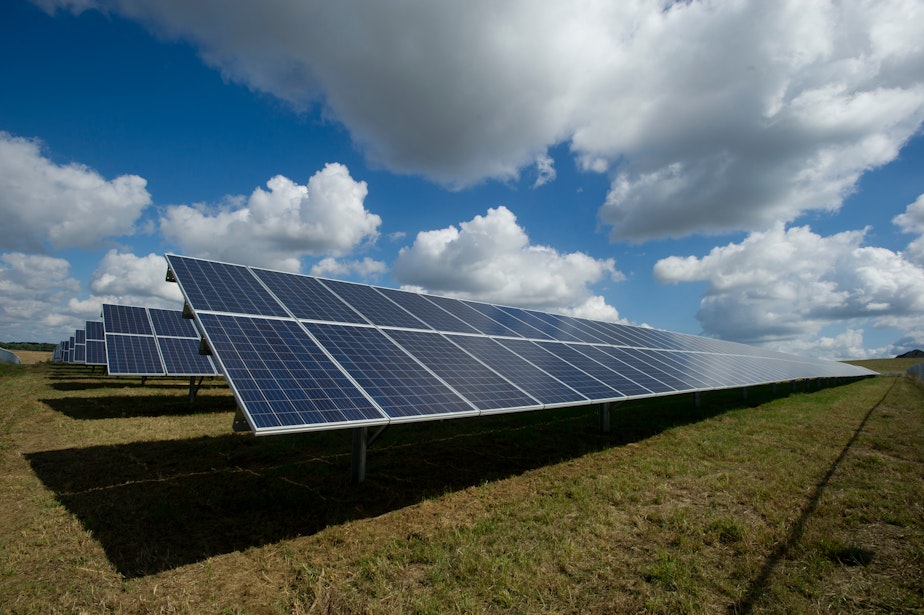Washington is ripe for solar energy development. But where should it go?

Central and Eastern Washington are the sunniest areas of the state, with several large solar farms already in place.
But as the energy grid undergoes a transition to completely cut out fossil fuels, some areas want to pump the brakes on quick solar development.
"The amount of renewables we need is kind of uncertain," said Jennifer Light, director of power planning for the Northwest Power and Conservation Council. "We don't know the trajectory of where the region is going and how fast."
The council is comprised of members appointed by the governors of Washington, Oregon, Montana and Idaho. Every 20 years the council creates a regional plan for energy throughout the Pacific Northwest.
As states set more aggressive goals for renewable energy, the council steps in to help determine the specifics of how much electricity we need to achieve those goals. Those guidelines are then used by utility companies and state governments to decide which renewables to invest in, and where those renewable sources might be built.
The council's latest plan was finalized earlier this year, and Light says that, as states build in more requirements to drop fossil fuels completely, wind and solar energy will have to play a growing role in our electrical grid.
Currently, solar energy makes up 1,500 megawatts, around 1% of the region's generated electricity, and the council is looking to increase it to 3,500 megawatts.
Sponsored
"Basically taking the amount of solar we have today and doubling it over the next six years," Light said.
That expansion is a conservative estimate. Changes in power needs due to broad transitions, like a full transition from gas to electric vehicles, will require more produced energy.
To keep up with that projected demand, there are state and federal incentives designed to draw more solar developers to the state. But the reception to "solar sprawl" is mixed.
"We've got really productive farmland there, and rangeland," said Karen Janowitz, project lead for the Least Conflict Solar Siting Process on the Columbia Plateau. "We've got important shrub step habitat and really great species. It's important tribal territory as well. So you can imagine there's a lot of pressure, of people not necessarily wanting these large solar developments in their backyard."
The Least Conflict Process is a state-funded program to identify and map the concerns of various work groups across Washington. These include farmers, ranchers, Native tribes, environmental conservationists, and solar developers.
Sponsored
"This is way of finding areas where solar could be developed more rapidly, hopefully, because we do need it soon. And still protect these areas," Janowitz said.
Listen to the full conversation by clicking the audio above.





